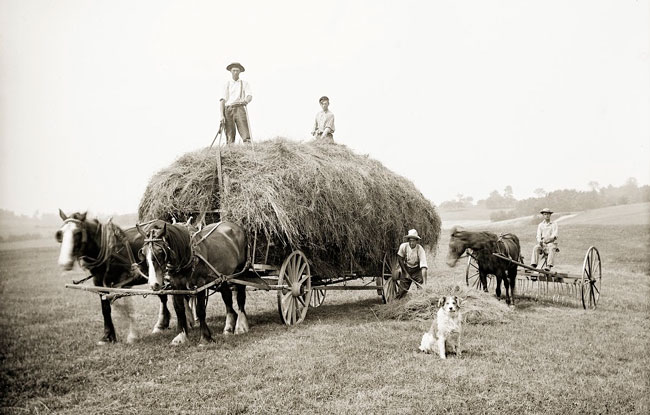B A C K T H E N
East Pittston Haying
Pitching on the last of the raked-up scatterings. The boy on top is packing down the load, which is built up from the corners. Hay was Maine’s biggest crop and also its most neglected, with the practice of selling hay rather than feeding stock blamed for a shortage of fertilizing manure. The abundance of semi-abandoned fields with grass free for the mowing was another factor.
Much Kennebec Valley hay was shipped to the Boston market, the Kennebec–Boston steamboat line being known as “the hay line.” In winter, hay dealers traveled the valley from farm to farm with horse- or ox-powered presses, baling hay to be sold. “English hay,” from upland hayfields, was largely composed of grasses of European origin.
These horses look to be Belgians, likely shipped by rail “green” from the Midwest and paraded from the cars to the dealer’s stable in a string, tied tail to mane. The light horse pulling the rake also pulled the family buggy and cultivated the garden. Evidently the farm’s dog is bossing the operation.
Text by illiam H. Bunting from Maine On Glass. Published by Tilbury House Publishers, 12 Starr St., Thomaston, Maine. 800-582-1899.
Maine On Glass and prints of the photographs are available through the Penobscot Marine Museum: PenobscotMarineMuseum.org.

